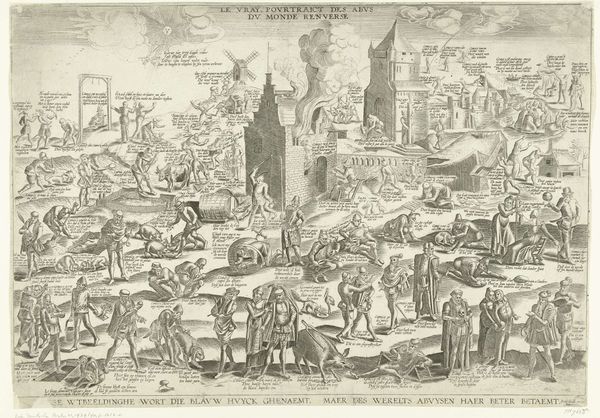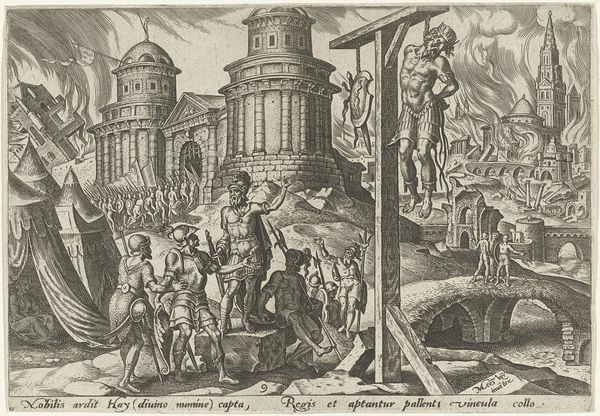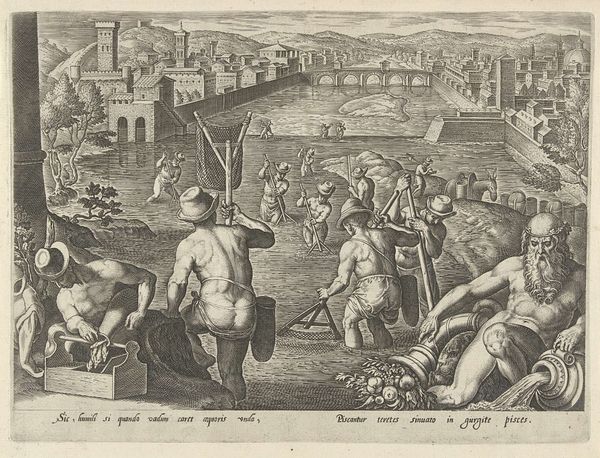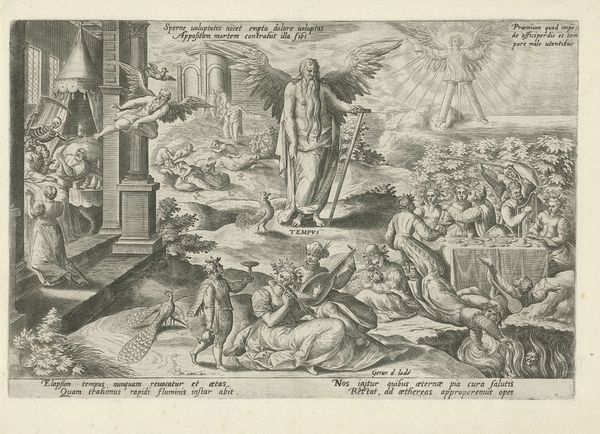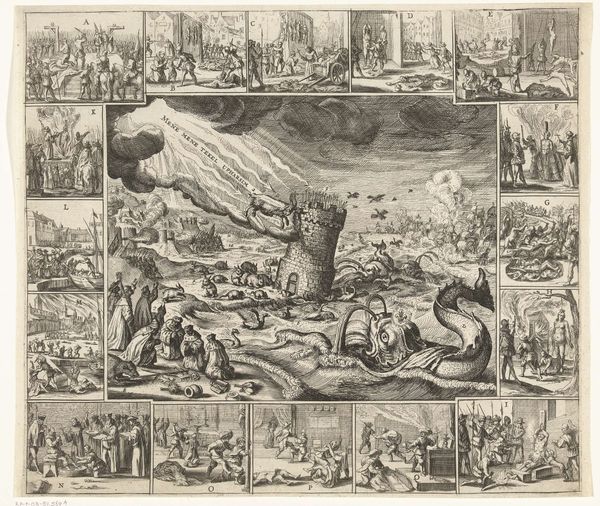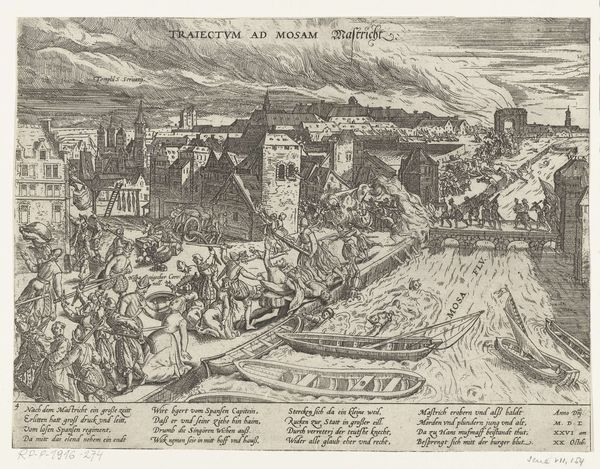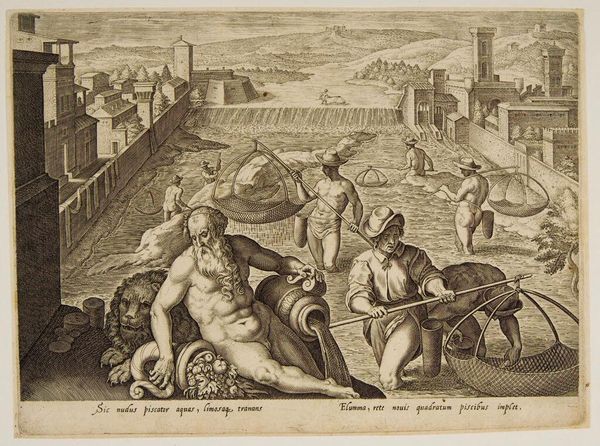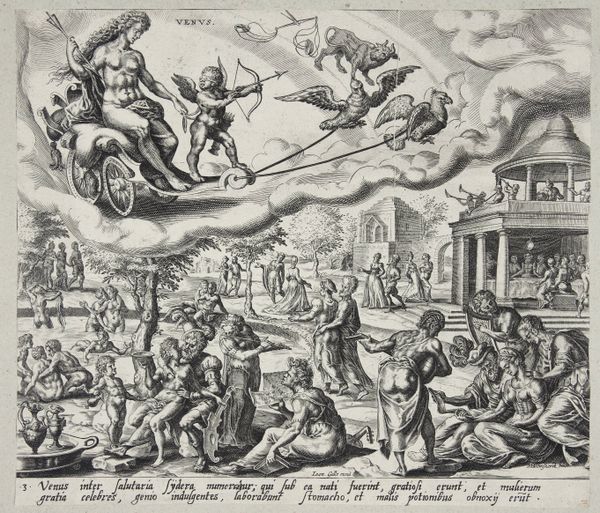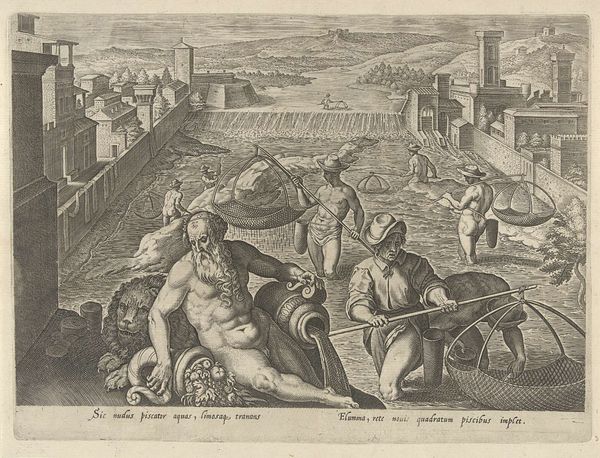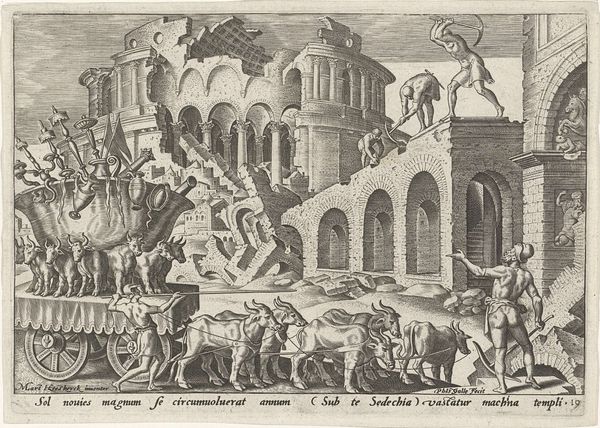
drawing, print, engraving
#
drawing
# print
#
landscape
#
figuration
#
ancient-mediterranean
#
history-painting
#
engraving
Dimensions: height 212 mm, width 259 mm
Copyright: Rijks Museum: Open Domain
Editor: Philips Galle's engraving, "Kolos van Rhodos" from 1572, presents such a dramatic scene. It looks like it depicts the fallen Colossus, alongside this impossible version with his legs spanning the harbor entrance. The small figures swarming the wreckage feel almost overwhelmed by the sheer scale of it all. What social or political narrative do you think Galle was trying to construct here? Curator: That’s a great question! Let's consider this print not just as a depiction of an ancient wonder, but as a product of its own time, the 16th century. Galle and his contemporaries were fascinated with antiquity, yes, but their representations served contemporary purposes. It is part of a series on the Seven Wonders of the Ancient World. What would it mean to show a wonder destroyed by natural causes in a historical moment riddled with conflict and the instability of political power? Editor: So, it's not just about admiring the past, but maybe commenting on the fragility of even the most impressive achievements? Were these images perhaps also circulated amongst the growing merchant class? Curator: Exactly! Consider how prints functioned in the 16th century. They circulated widely and often served to transmit knowledge and ideologies. Representing a fallen monument and also its glory was a visual strategy that underscored the transience of earthly power. The Colossus could serve as a memento mori reminding viewers, especially wealthy merchants and rulers, of the inevitable decline of all empires. Do you see that resonance between power, trade, and morality? Editor: Yes, I see. The image gains another dimension thinking about its audience and function. I thought it was just a historical depiction, but it's a commentary relevant to its own time. Curator: And that’s how art becomes a reflection of the societies that create and interpret it! Editor: That really makes me see this print and similar historical images in a completely new way. Thanks!
Comments
No comments
Be the first to comment and join the conversation on the ultimate creative platform.
